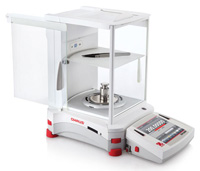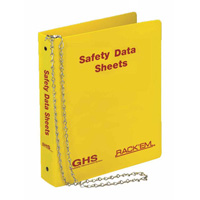| The Home page of ILPI's Safety Data Sheet (SDS) Resource, the leader in SDS information since 1995! | |
| The history and philosophy behind this resource. | |
| A curated collection of books and reference materials concerning Safety Data Sheets and closely related topics. | |
| Paste your plain text SDS into the SDS-Demystifier, and it will be converted into a hypertext-enriched document with links to detailed explanations of each key term. | |
| An extensive list of frequently asked questions about Safety Data Sheets including regulations, content, compliance, and more. | |
| A humorous take on Safety Data Sheet jargon. Fill in the blanks on our entry form to generate a personalized Unsafety Data Sheet to share with your coworkers. | |
| Since 1995, we've maintained this massive curated list of the best places to find Safety Data Sheets on the Internet. | |
| You are here! Way more than a glossary, this hypertext-enhanced resource covers hundreds of SDS-related terms and expert knowledge. Each entry includes both the SDS relevance and links to additional authoritative resources. | |
| Archived results of Safety Data Sheet related polls taken by some of our millions of site visitors | |
| The OSHA regulations behind SDS regulations, including the inspection guidelines and over 400 official interpretations letters under the Hazard Communication Standard | |
| Commercial suppliers of SDS authoring and management software as well as cloud compliance services. | |
| Commercial companies that will create SDS's for your specific needs as well as SDS translation companies. |

Safety signs, banners, and scoreboards? Get yours at Safety Emporium!
Definition
An ether molecule has an oxygen atom connected to two alkyl (see hydrocarbon) units through carbon-oxygen single bonds. The two alkyl groups can be the same or different:

The following are NOT examples of ethers because the oxygen atom is not connected to two different carbon atoms via single bonds or because the attached group is not an alkyl:

Ether is also used as shorthand to refer to one of the most common ethers, diethyl ether, shown above.

Be sure you're in compliance with DOT placards and labels from Safety Emporium.
Additional Info
Peroxide Formation
An Ether That is Not An Ether
The term "petroleum ether" is an old term used to refer to a mixture of hydrocarbons with a specific boiling point range. In other words, there is no ether in petroleum ether! Synonyms for petrolem ether include naphtha, petroleum benzin, benzin, and the lab slang, "pet ether". The petroleum ether most commonly used in laboratories has a boiling point range of roughly 30 to 60 °C.
Cyclic Ethers
In many ethers, the atoms are arranged in a closed ring:
- Cyclic ethers which have 3 atoms forming a ring (one oxygen atom, two carbon atoms) are called epoxides or oxiranes. These are also sometimes referred to as alkene oxides. Shown below are some examples:
- Cyclic ethers which have 4 atoms in a ring (one oxygen, three carbons) are called oxetanes (see picture below).
- Most other cyclic ethers are named systematically using IUPAC nomenclature rules, although there are a few with frequently used trivial names such as tetrahydrofuran, THF, (see picture below).
- Large rings which contain multiple ether units constitute a class of materials called crown ethers which are great at solubilizing certain metal cations (positively charged metal ions). These are commonly named using the notation "x-crown-y" where x = the number of atoms forming the ring and y is the number of oxygen atoms. An example of 18-crown-6 is shown below:



Laboratory operations are a breeze with Ohaus analytical balances from Safety Emporium.
SDS Relevance
Ethers and mixtures that contain ethers will always have a Safety Data Sheet that you should read thoroughly before use.
Again, the risk of peroxide formation is particularly high with ethers. Be sure to read about peroxides so you know how to detect, avoid and/or deal with them should you encounter them. Many ethers (such as diethyl ether) are highly volatile and flammable. Diethyl ether does not require a flame or spark to ignite and can be ignited by static electricity or a hot plate.
Many ethers, particularly the crowns, are eye and skin irritants and/or toxic. The halogenated ethers such as bis(chloromethyl) ether and chloromethyl methyl ether are known human carcinogens.
Always read the SDS before using an ether so you know what safety precautions to take. Use appropriate engineering controls, wear appropriate personal protective equipment (PPE), have good ventilation, and avoid heat or ignition sources.
Further Reading

Get your SDS binders, centers and more from Safety Emporium.
- IUPAC (International Union of Pure and Applied Chemistry) nomenclature rules on how to name ether molecules.
- The Millipore Sigma (formerly Sigma-Aldrich) SDS for diethyl ether
- NIOSH's Pocket Guide to Chemical Hazards entry on ethyl ether.
- Health and safety guidance on ethers at The University of Edinburgh
- OSHA's Occupational Chemical Database entry on diethyl ether.
- The Report on Carcinogens, Fourteenth Edition's entry on Bis(chloromethyl) Ether and Technical- Grade Chloromethyl Methyl Ether
- Organic chemistry students may enjoy Synthesis of Ethers Chemistry LibreTexts.
- ATSDR has a ToxFAQ for Methyl tert-Butyl Ether (MTBE), an unhealthy gasoline additive and groundwater contaminant.